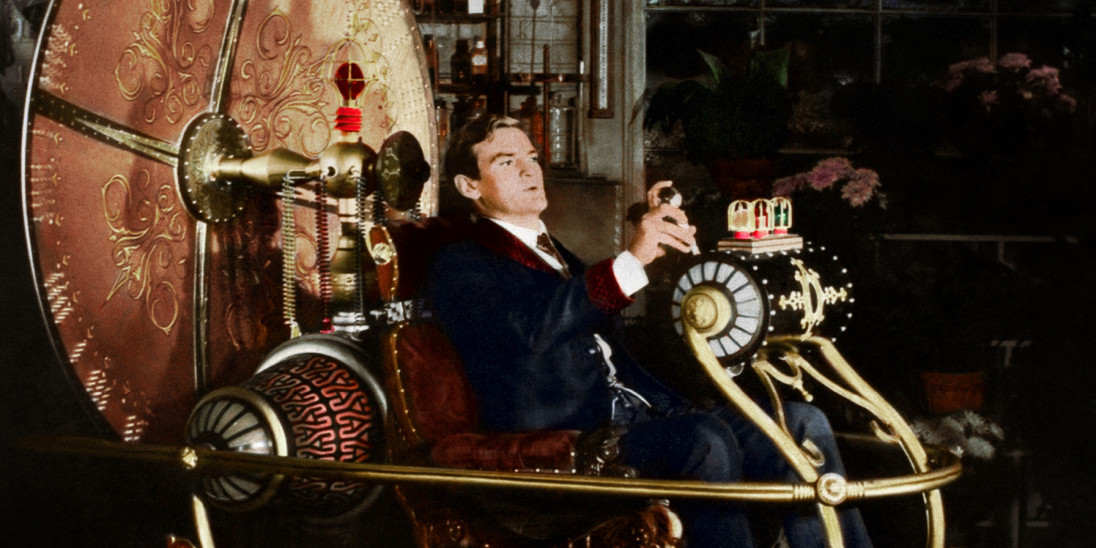When The Time Machine was released in 1960, director George Pal transported audiences into a cinematic adventure unlike anything they'd seen before. Based on H.G. Wells’ groundbreaking 1895 novel, the film combines science fiction spectacle with philosophical introspection, exploring not only time travel, but also human nature, civilization, and the consequences of progress.

The story centers on George, a Victorian-era inventor (played by Rod Taylor) who builds a machine that can travel through time. Initially leaping forward in small increments, George eventually propels himself far into the distant future, landing in the year 802,701 A.D. There, he discovers a divided world: the peaceful but passive Eloi, and the terrifying, subterranean Morlocks, who prey on them in a haunting allegory of class conflict and technological decay.
Rod Taylor gives a charismatic and thoughtful performance as the Time Traveller, embodying both scientific curiosity and moral urgency. Yvette Mimieux plays Weena, an Eloi woman who represents innocence and hope, though her character is largely symbolic rather than complex. The film also features memorable supporting performances from Alan Young as George’s friend Filby, adding emotional weight to the story’s bookends.
What truly made The Time Machine stand out in its era—and what still draws admiration today—are its groundbreaking special effects. The time-lapse sequences of changing landscapes, evolving fashion, and the passage of centuries were revolutionary in 1960 and won the film an Academy Award for Best Special Effects. These visuals brought the concept of time travel vividly to life in a way few films had before.
Beyond its visuals, the film also explores deep themes: humanity’s dependence on technology, the loss of intellectual curiosity, and the dangers of social complacency. George’s discovery of a future where humans have forgotten their history—and lost their will to fight oppression—remains disturbingly relevant.
The film's pacing reflects its time—slower and more deliberate compared to modern sci-fi—but that patience allows for richer atmosphere and reflection. Its blend of romance, danger, and imagination makes it a true genre-defining work that helped pave the way for more philosophical science fiction in cinema.

The Time Machine (1960) is a landmark in sci-fi filmmaking. Thoughtful, visually inventive, and emotionally resonant, it stands as both a faithful adaptation of Wells’ novel and a film with its own cinematic magic. More than six decades later, it still invites us to ask: What kind of future are we building?


